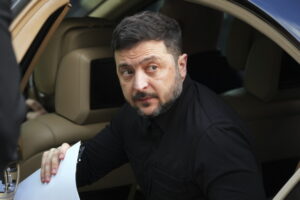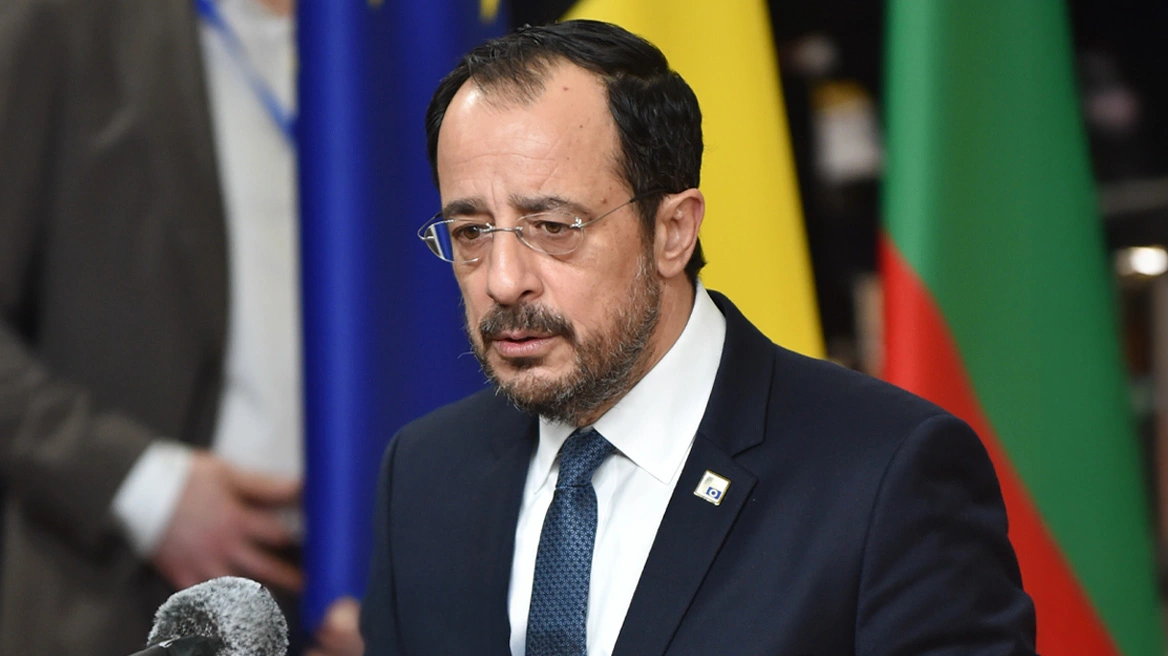Off the coast of Siberia, not far from Alaska, a Russian ship has been docked for four and a half years. The Akademik Lomonosov, the world’s first floating nuclear power plant, sends power to some 200,000 households on land using next-generation nuclear technology: small modular reactors, SMRs (Small Modular Reactors), also known as “pocket reactors” because of their size and capabilities.
They are known as “small reactors” because of their size and size.
These are the same nuclear reactors that Kyriakos Mitsotakis spoke about in July at the Economist conference, causing a sensation in the audience. Because he opened up, even in the form of questions, the debate on a taboo subject in Greek society, but also for part of Europe: the use of nuclear energy. His move was dictated by a hard truth: that Europe is unable to achieve its – initially – ambitious net zero targets for 2050. Unless it resorts to nuclear power, which by its very nature is the cleanest.
The ambitious goals of the ambitious zero net zero target are ambitious and ambitiously ambitious, unless it resorts to nuclear power.
There is even the need to readjust Europe’s energy strategy in terms of its independence from Russian gas. Moscow’s counterattack with low prices and ample supplies through bilateral agreements has trapped the sanctions policy due to invasion of Ukraine. Already most countries are re-importing Russian gas, cheaper than expensive US LNG, in pre-war conditions and quantities, and the whole decarbonisation operation is on “muddy paths”.
And as long as the issue of sufficiency, “purity” and the cost of energy, topical, moreover, with the recent surge in electricity prices in our country, will become an urgent issue, alternative ways out will be sought, with the use of nuclear energy being the most prominent. A topic to which the Prime Minister’s advisor on energy issues, Nikos Tsafos, returned, describing the two paths that Greece could follow: either to participate in an interconnected European market project, e.g. Bulgaria or Romania, so that some nuclear megawatts could be added to the domestic energy system, balancing the volatility of RES. Or to go directly to the installation and operation of the new generation of small modular SMRs.
The critical questions
Can nuclear power provide a solution to the problem of electricity costs that has derailed the budgets of families and businesses? Any solution that leads to a reduction in the use of expensive lignite and natural gas, while ensuring that volatile renewables offset the balance of the system, leads to a reduction in the cost of electricity generation. But the development of SMRs is a medium to long-term way out, not an immediate one.
The prime minister’s remarks at the Economist conference led without logical leaps to specific questions that need to be answered… yesterday: “Europe remains a leader in nuclear technology. Greece does not have nuclear energy. There is no way to reach the neutral balance of emissions without it. So are we, as Europeans, investing in the next generation of small nuclear reactors?”. What is the need for further comment when this is perhaps the most critical strategic choice for the European Union over the next 20 years. As it relates to achieving its energy self-sufficiency, in a cheaper, safer way and with a “clean” footprint.
For nuclear energy, the climate is not so ripe neither in Greece nor in some EU countries. Countries in the former Eastern Europe are already running or planning new nuclear plants, but in the West opinions are divided.
Some steps have been taken, the direction is set to focus on SMRs, but it is time for this debate to accelerate, leading to radical decisions, because time is pressing. From making them to completing an SMR construction and operation project takes almost 15 years. But that is why politicians are worthwhile, to devise strategic solutions even if they will pay off in the long run.

Features and uses
But what are these famous small modular reactors? Clearly smaller in capacity than the mighty traditional ones, but emphatically lower in cost. Most importantly, noticeably safer. Their technology is used everywhere. On land, at sea and underwater. Dozens of US submarines “hiding” in the depths of the oceans are powered by SMRs reactors. Land-based ones are already growing in various US states, China and Russia.
The three countries are in a race to build new SMRs for their own needs or to sell them to third countries. Beyond the states, it is also a gamble for leading businessmen who are rushing to invest huge sums to build and commercialize SMRs, signing large contracts with a horizon of decades. Among them is the Greek-American billionaire, but far-sighted investor, John Katsimatidis, whose plans to develop SMRs plants in various US states were described by Proto Thema a few weeks ago.
SMRs provide less power, typically a third of a traditional plant, but they require less space, can be built in more places, at lower cost, and even be easily transported. They can electrify entire cities or even large regions. The heat they generate can be used in the chemical steel, paper and food industries or the production of aviation and marine fuels.
They have a maximum electrical capacity of 300 MW and can produce 7.2 million kWh per day, compared to the 1,000 MW and 24 million kWh that constitute the output of large nuclear power plants. They can use many cooling media, such as light water, liquid metal or molten salt, depending on the technology. Globally, there are more than 80 SMRs projects in different stages of development in 18 countries. Leading the way are USA, China, Russia, UK, Canada, Japan, South Korea.
High safety
They consist of small components that can be easily delivered and assembled on site. They have passive (inherent) safety systems, with a simpler design, a lower power reactor core and higher coolant fractions. These significantly increase the time operators are allowed to react in the event of incidents or accidents.
The safety principles of SMRs rely primarily on simple phenomena such as natural circulation to cool the reactor core, even in incident or accident situations that require very limited or even no operator action to bring the reactor to a safe condition. These passive safety systems also allow the elimination of a number of components, valves, safety pumps, pipes and cables, thus reducing the risk of failure.
All of this could answer the major reservation about the country’s entry into the “nuclear” club, which focuses on the fact that Greece is located in an earthquake-prone terrain and environment around it. It is not enough for the Greek to reason that anyway some of the closest neighbours have already joined or are turning full tilt to nuclear energy. Bulgarians, Romanians and Turks are already “running”, recently the Serbs are noisily entering the nuclear game, so what security can there be for Greece in case of e.g. an accident or sabotage? Something that is diminished in the case of SMRs, but can certainly never be reduced to zero.
Climate change
This is why the debate will be painful and tortuous. But it has to be done, as the solutions chosen so far for the zero pollution green Europe of 2050 seem out of touch with reality and have already been diverted. But climate change has already proven that it is not a joke. And the planet, nature is taking revenge on those who don’t care about its survival.
Most countries are trying to free up their energy systems quickly to deal with the climate crisis. Wind and solar energy now provide at least 15% of the world’s energy. However, there is a growing sense of urgency to “clean up” our energy systems as extreme weather events wreak havoc and challenges with Renewable Energy remain. And there is another fundamental truth. That renewables are steadily increasing their share of the energy mix, offering clean energy, but on their own they cannot ensure safe system operation. In order to permanently eliminate fossil fuels from the energy system of each country and to ensure the balance of the system, the most certain solution is to include nuclear energy. In the two ways mentioned above.
What Europe is doing
The EU understands in principle the magnitude of the problem, but, as usual, is “slow to act”. To ensure the successful deployment of the first SMRs by the early 2030s, the Commission announced on 4 April 2023 the ambitious Declaration on “EU Small Modular Reactors (SMRs) 2030: Research and Innovation, Education and Training”. And last February it went on to set up a European SMR Industrial Alliance, involving 277 public and private actors, organisations and companies, with the support of the Commission, to lead the development of a European ecosystem for SMRs.
The sector accounts for only 4% of the world’s energy production. But as was shown at COP 28 in December in Dubai, it will grow faster than the renewables sector. On the sidelines of the summit more than 20 countries, including the US and Britain, signed a joint declaration to triple nuclear power generation by mid-century. In Europe, an informal alliance of 14 countries, led by France, has been set up to increase nuclear power generation by 50% by 2050.
At the same time, the nuclear power industry has signed an agreement with a leading nuclear power company, which aims to achieve 2050 by 2050.
The two scenarios
A side development concerns whether cooperation in the electricity grid sector with Bulgaria could have a nuclear component. That is, Greece (a Greek energy company) could take a stake in one of the new units to be developed at the Kozloduy nuclear power plant. Either a bilateral multi-year (20-30 years) contract could be signed for the purchase of electricity from the nuclear power plant at preferential prices. A subject which, according to then Prime Minister Denkov, is of interest to Greece, as he stated after Kyriakos Mitsotakis’ last visit to Sofia this time last year.
Ask me anything
Explore related questions





